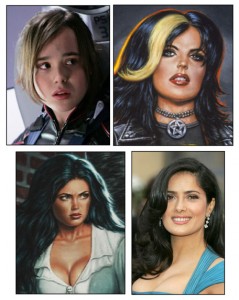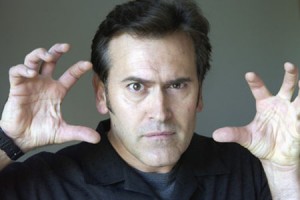At every comic book convention and book festival I attend, I meet young writers—some middle schoolers, but mostly teenagers—who want to hone their craft, but are either embarrassed by what they’ve written, or frustrated that the words aren’t coming fast enough. And they want to give up.
As writers, we all know about frustration. It’s sitting at your laptop or desktop computer, staring at the screen, trying to will the next words to form so you can get down to business—and they won’t show up. And sure, we all get embarrassed by stuff we’ve written—we see the mistakes and the clunky sentence structure and the stilted dialogue that everyone fails to notice while they’re telling us how brilliant the prose is.
But that, as the saying goes, is all part of the game. You accept the frustrations and the embarrassments and move on. There’s no reason to just give up.
Want an example?
Here, presented for the first time anywhere, are scans of my first published work, “Again: He Who Stalks”—a space-fantasy story I wrote in my junior year at Loyola School in NYC; I would’ve been 16 or so. (I’ve updated the title treatment so not everything about this thing is embarrassing.) Even though it wears its Star Wars influence not just on its sleeve but on the whole damn coat (I was a major SW fan back then), even though every moment I spent re-reading it for this post made me cringe—because no creator likes to examine their early works—it reinforces the adage I’m constantly telling young writers: Everybody’s Gotta Start Somewhere. You just have to keep at it.
Looking at “Stalks” today…yeah, it’s pretty embarrassing—to me, at least. The clunky sentence structure and stilted dialogue? They’re all there—and more. I mean, nerdy author notes within the story explaining sci-fi terms I’d made up? Really? I even provided the sad illustration on page 4. Even worse, it was meant to tie-in to an 8mm sci-fi movie I’d tried my hand at writing and directing (Star Knights? Seriously? Ugh.), but never got past the first couple of days of shooting—before the brand-new camera broke. (That’s what I get for attempting double exposures on film by taping over one of the gears inside the camera housing—damn you for your bad advice, Cinemagic magazine!)
And yet, warts and all, this little gem won The Loyola Magazine!’s contest for Best Short Story—which came as a complete surprise to me. It also led to the teacher who oversaw the magazine asking me the next year if I’d like to become the fiction editor (thanks again, Mr. Moylan!); I said yes. So, maybe “Stalks” was better than I thought…at the time. And maybe if I hadn’t written it I wouldn’t have started down the path that has me entertaining you today with the adventures of a teenaged Goth named Pandora Zwieback.
Everybody’s Gotta Start Somewhere. So keep writing!
- “Again, He Who Stalks” page 1
- “Again, He Who Stalks” page 2
- “Again, He Who Stalks” page 3
- “Again, He Who Stalks” page 4
- “Again, He Who Stalks” page 5
- “Again, He Who Stalks” page 6
“Again: He Who Stalks” copyright © 1979, 2014 Steven A. Roman. All rights reserved.

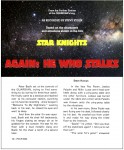
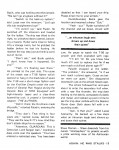
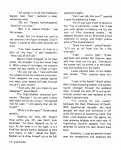
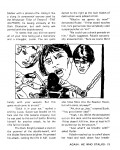
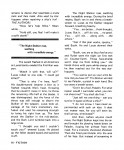
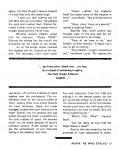
 Highlander: Not so much the original Christopher Lambert/Sean Connery film that launched the franchise (let’s just pretend the god-awful sequels that followed never happened), but the 1990s TV series starring Adrian Paul as Duncan MacLeod. Four hundred years old? Warrior and lover? Flashbacks to historical adventures? Yeah, I guess you could say it had a tiny bit of influence on Annie’s immortal status. 😀
Highlander: Not so much the original Christopher Lambert/Sean Connery film that launched the franchise (let’s just pretend the god-awful sequels that followed never happened), but the 1990s TV series starring Adrian Paul as Duncan MacLeod. Four hundred years old? Warrior and lover? Flashbacks to historical adventures? Yeah, I guess you could say it had a tiny bit of influence on Annie’s immortal status. 😀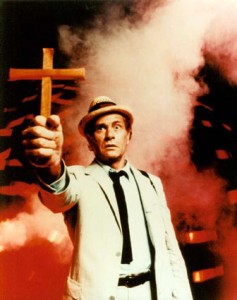 Kolchak: the Night Stalker: Before Mulder and Scully in The X-Files, there was intrepid-but-luckless reporter and monster hunter Carl Kolchak, created by author Jeff Rice in an unpublished novel titled The Kolchak Papers, and portrayed by fantastic character actor Darren McGavin. Kolchak starred in two early seventies made-for-TV movies (The Night Stalker—adapted from Rice’s manuscript—and The Night Strangler, both written by I Am Legend author Richard Matheson), and then in the one-season TV series that bore his name. From vampires and swamp monsters to Jack the Ripper and seven-foot-tall American Indian spirits, Kolchak chased and killed them all, in pursuit of the one great news story that would make him an A-list journalist. Of course no one ever believed him, and he never got that A-list story, but that didn’t mean Carl stopped trying.
Kolchak: the Night Stalker: Before Mulder and Scully in The X-Files, there was intrepid-but-luckless reporter and monster hunter Carl Kolchak, created by author Jeff Rice in an unpublished novel titled The Kolchak Papers, and portrayed by fantastic character actor Darren McGavin. Kolchak starred in two early seventies made-for-TV movies (The Night Stalker—adapted from Rice’s manuscript—and The Night Strangler, both written by I Am Legend author Richard Matheson), and then in the one-season TV series that bore his name. From vampires and swamp monsters to Jack the Ripper and seven-foot-tall American Indian spirits, Kolchak chased and killed them all, in pursuit of the one great news story that would make him an A-list journalist. Of course no one ever believed him, and he never got that A-list story, but that didn’t mean Carl stopped trying. Sonja Blue: Author Nancy A. Collins’s punk-rock vampire who hunts other vampires, introduced in the 1989 novel Sunglasses After Dark and still stalking her kind today in brand-new novellas. In an Anne Rice–influenced horror industry, at a time when just about every publisher was seeking to knock off Interview With the Vampire (or at least its success, as publishers do these days with their Twilight, Hunger Games, and 50 Shades of Grey imitations), Sonja arrived on the scene as the anti-Lestat. There was nothing romantic about vampirism in Sonja’s world—it was brutal and ugly and a curse, and being turned into a blood-drinking corpse only meant that Sonja was able to unleash her full anger to kill every stinking vampire she could find.
Sonja Blue: Author Nancy A. Collins’s punk-rock vampire who hunts other vampires, introduced in the 1989 novel Sunglasses After Dark and still stalking her kind today in brand-new novellas. In an Anne Rice–influenced horror industry, at a time when just about every publisher was seeking to knock off Interview With the Vampire (or at least its success, as publishers do these days with their Twilight, Hunger Games, and 50 Shades of Grey imitations), Sonja arrived on the scene as the anti-Lestat. There was nothing romantic about vampirism in Sonja’s world—it was brutal and ugly and a curse, and being turned into a blood-drinking corpse only meant that Sonja was able to unleash her full anger to kill every stinking vampire she could find.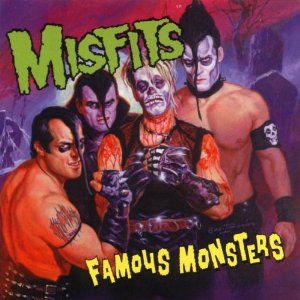 But then one night I downloaded the latest episode of
But then one night I downloaded the latest episode of  One of my short stories, “Laundry Day”—about a group of people trapped while doing their wash on the eve of a zombie uprising—got its start from a toy ring that I bought from a gumball machine in a neighborhood Laundromat. What popped into my head when I first saw the machine full of rings was a scene of a guy presenting this crappy, 25-cent jewelry to his girlfriend as a romantic gesture, knowing they’d never have the chance to get married. The “camera” in my head then pulled back to reveal them huddled inside a Laundromat that had its metal security gates pulled down; beyond the gates was a full-on zombie apocalypse. (Yes, a lot of what I “see” when I write involves Hollywood-style cinematography.)
One of my short stories, “Laundry Day”—about a group of people trapped while doing their wash on the eve of a zombie uprising—got its start from a toy ring that I bought from a gumball machine in a neighborhood Laundromat. What popped into my head when I first saw the machine full of rings was a scene of a guy presenting this crappy, 25-cent jewelry to his girlfriend as a romantic gesture, knowing they’d never have the chance to get married. The “camera” in my head then pulled back to reveal them huddled inside a Laundromat that had its metal security gates pulled down; beyond the gates was a full-on zombie apocalypse. (Yes, a lot of what I “see” when I write involves Hollywood-style cinematography.)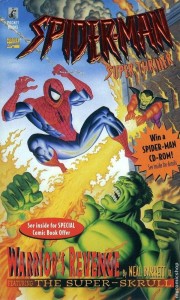 In the late nineties I was an editor for a publisher/book packager named Byron Preiss, who had a license from Marvel Comics to publish original novels based on their characters. Having edited some of the books, and written short stories for a couple of anthologies (Untold Tales of Spider-Man and The Ultimate Hulk), I was offered the chance to take over a YA novel titled Spider-Man Super Thriller: Warrior’s Revenge—Marvel had rejected the manuscript delivered by a mystery and fantasy writer named Neal Barrett Jr. Basically, I was in Byron’s office when news of the rejection came in and he turned to me and said, “So, you want to write it?” Of course I said yes!
In the late nineties I was an editor for a publisher/book packager named Byron Preiss, who had a license from Marvel Comics to publish original novels based on their characters. Having edited some of the books, and written short stories for a couple of anthologies (Untold Tales of Spider-Man and The Ultimate Hulk), I was offered the chance to take over a YA novel titled Spider-Man Super Thriller: Warrior’s Revenge—Marvel had rejected the manuscript delivered by a mystery and fantasy writer named Neal Barrett Jr. Basically, I was in Byron’s office when news of the rejection came in and he turned to me and said, “So, you want to write it?” Of course I said yes!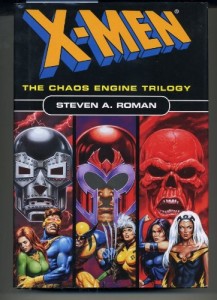 The result was X-Men: The Chaos Engine Trilogy, in which the X-Men fight their archenemy Magneto, Doctor Doom (from the Fantastic Four), and the Red Skull (from Captain America) for control of the Cosmic Cube, a device that allows them to alter reality. All three books sold really well—helped in no small part by the fact that Book 1, X-Men/Dr. Doom, came out in time for the first X-movie. I think that’s when people really started to recognize my byline.
The result was X-Men: The Chaos Engine Trilogy, in which the X-Men fight their archenemy Magneto, Doctor Doom (from the Fantastic Four), and the Red Skull (from Captain America) for control of the Cosmic Cube, a device that allows them to alter reality. All three books sold really well—helped in no small part by the fact that Book 1, X-Men/Dr. Doom, came out in time for the first X-movie. I think that’s when people really started to recognize my byline.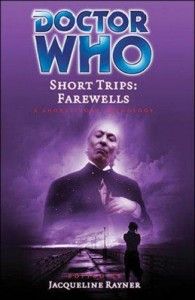 I used to be a major comic book fan, but over the years I got tired with all the superhero stuff—which is kinda funny, considering my professional writing career started with me writing short stories and novels about Spider-Man, the X-Men, and the Incredible Hulk. Now I just spend all my money on Doctor Who merchandise! I’ve been a Who fan—Whovian?—since high school. I even got to write a story for an official Doctor Who anthology!
I used to be a major comic book fan, but over the years I got tired with all the superhero stuff—which is kinda funny, considering my professional writing career started with me writing short stories and novels about Spider-Man, the X-Men, and the Incredible Hulk. Now I just spend all my money on Doctor Who merchandise! I’ve been a Who fan—Whovian?—since high school. I even got to write a story for an official Doctor Who anthology!